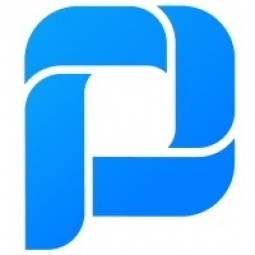公司规模
Large Corporate
地区
- Africa
国家
- Kenya
产品
- ProcessMaker
技术栈
- Dynamics CRM
实施规模
- Enterprise-wide Deployment
影响指标
- Productivity Improvements
- Customer Satisfaction
- Digital Expertise
技术
- 应用基础设施与中间件 - API 集成与管理
适用行业
- 金融与保险
适用功能
- 商业运营
用例
- 欺诈识别
- 监管合规监控
服务
- 系统集成
- 软件设计与工程服务
关于客户
肯尼亚合作银行是东非共同体中经济规模最大的国家肯尼亚的一家商业银行。该银行由肯尼亚中央银行(中央银行和国家银行监管机构)授权经营。该银行引入了代理银行模式,在肯尼亚拥有深厚的客户基础,截至 2018 年 12 月,其账户数超过 750 万。2010 年,该银行因其出色的增长而被《伦敦金融时报》评为“肯尼亚最佳银行”。肯尼亚合作银行有限公司根据《公司法》在肯尼亚注册成立,并根据《银行法》获得营业许可。该银行最初于 1965 年根据《合作社法》注册成立,直至 2008 年 6 月 27 日,该银行特别股东大会决定根据《公司法》注册成立,以符合在内罗毕证券交易所 (NSE) 上市的要求。该银行于 2008 年 12 月 22 日公开上市。
挑战
肯尼亚合作银行是肯尼亚一家领先的商业银行,其所使用的软件套件无法提供银行所需的全面解决方案。该银行需要将旧系统与其工作流解决方案集成。例如,该银行需要简化账户管理流程,同时又不丢失现有投资的信息。他们首选能够扩展现有软件价值的工作流解决方案,尤其是能够从以前的系统中获取信息并将数据整合到流程中,然后连接到点解决方案、云解决方案等的解决方案。合作银行还希望提高其上传文档的身份验证流程的安全性和效率。该银行没有适当的技术支持大规模数字识别工作,因此不得不采用手动流程。
解决方案
合作银行知道,为了提高安全性、保持合规性并提供尽可能最佳的客户体验,它需要一个强大的工作流系统。ProcessMaker 的工作流自动化软件使银行能够满足其各个部门的需求,包括完整的贷款生命周期和资产融资。合作银行需要一个强大的解决方案,能够在一个平台上简化其所有分支机构和流程。可能的解决方案所需的复杂性、定制和功能数量是巨大的。信息不仅安全地传输到新平台,而且由于效率的提高和多个不同系统的连接,旧软件的价值也得到了提升。由于 ProcessMaker 平台对非技术人员来说直观且易于使用,同时为开发人员提供高级功能,合作银行能够使用 ProcessMaker 满足所有运营需求。
运营影响

Case Study missing?
Start adding your own!
Register with your work email and create a new case study profile for your business.
相关案例.

Case Study
Real-time In-vehicle Monitoring
The telematic solution provides this vital premium-adjusting information. The solution also helps detect and deter vehicle or trailer theft – as soon as a theft occurs, monitoring personnel can alert the appropriate authorities, providing an exact location.“With more and more insurance companies and major fleet operators interested in monitoring driver behaviour on the grounds of road safety, efficient logistics and costs, the market for this type of device and associated e-business services is growing rapidly within Italy and the rest of Europe,” says Franco.“The insurance companies are especially interested in the pay-per-use and pay-as-you-drive applications while other organisations employ the technology for road user charging.”“One million vehicles in Italy currently carry such devices and forecasts indicate that the European market will increase tenfold by 2014.However, for our technology to work effectively, we needed a highly reliable wireless data network to carry the information between the vehicles and monitoring stations.”

Case Study
Safety First with Folksam
The competitiveness of the car insurance market is driving UBI growth as a means for insurance companies to differentiate their customer propositions as well as improving operational efficiency. An insurance model - usage-based insurance ("UBI") - offers possibilities for insurers to do more efficient market segmentation and accurate risk assessment and pricing. Insurers require an IoT solution for the purpose of data collection and performance analysis

Case Study
Smooth Transition to Energy Savings
The building was equipped with four end-of-life Trane water cooled chillers, located in the basement. Johnson Controls installed four York water cooled centrifugal chillers with unit mounted variable speed drives and a total installed cooling capacity of 6,8 MW. Each chiller has a capacity of 1,6 MW (variable to 1.9MW depending upon condenser water temperatures). Johnson Controls needed to design the equipment in such way that it would fit the dimensional constraints of the existing plant area and plant access route but also the specific performance requirements of the client. Morgan Stanley required the chiller plant to match the building load profile, turn down to match the low load requirement when needed and provide an improvement in the Energy Efficiency Ratio across the entire operating range. Other requirements were a reduction in the chiller noise level to improve the working environment in the plant room and a wide operating envelope coupled with intelligent controls to allow possible variation in both flow rate and temperature. The latter was needed to leverage increased capacity from a reduced number of machines during the different installation phases and allow future enhancement to a variable primary flow system.

Case Study
Automated Pallet Labeling Solution for SPR Packaging
SPR Packaging, an American supplier of packaging solutions, was in search of an automated pallet labeling solution that could meet their immediate and future needs. They aimed to equip their lines with automatic printer applicators, but also required a solution that could interface with their accounting software. The challenge was to find a system that could read a 2D code on pallets at the stretch wrapper, track the pallet, and flag any pallets with unread barcodes for inspection. The pallets could be single or double stacked, and the system needed to be able to differentiate between the two. SPR Packaging sought a system integrator with extensive experience in advanced printing and tracking solutions to provide a complete traceability system.

Case Study
Transforming insurance pricing while improving driver safety
The Internet of Things (IoT) is revolutionizing the car insurance industry on a scale not seen since the introduction of the car itself. For decades, premiums have been calculated using proxy-based risk assessment models and historical data. Today, a growing number of innovative companies such as Quebec-based Industrielle Alliance are moving to usage-based insurance (UBI) models, driven by the advancement of telematics technologies and smart tracking devices.
Case Study
Enhancing Security and Compliance in Remitly's Global Money Transfer Service with Fastly
Remitly, an online remittance service, was faced with the challenge of securing its proprietary global transfer network. The company needed a security solution that could meet PCI requirements and protect customers' sensitive transactions through its mobile application. The solution had to be capable of defending against new and emerging attack types without impacting performance. Remitly also had to deal with irregular traffic patterns, such as a sudden spike in account transfers from a small network segment on the Pacific coastline of South America. The company needed to determine in real time whether such traffic indicated an attack or valid requests. A traditional web application firewall (WAF) would not be able to distinguish this traffic, potentially leading to customer frustration if the IP was blacklisted.







